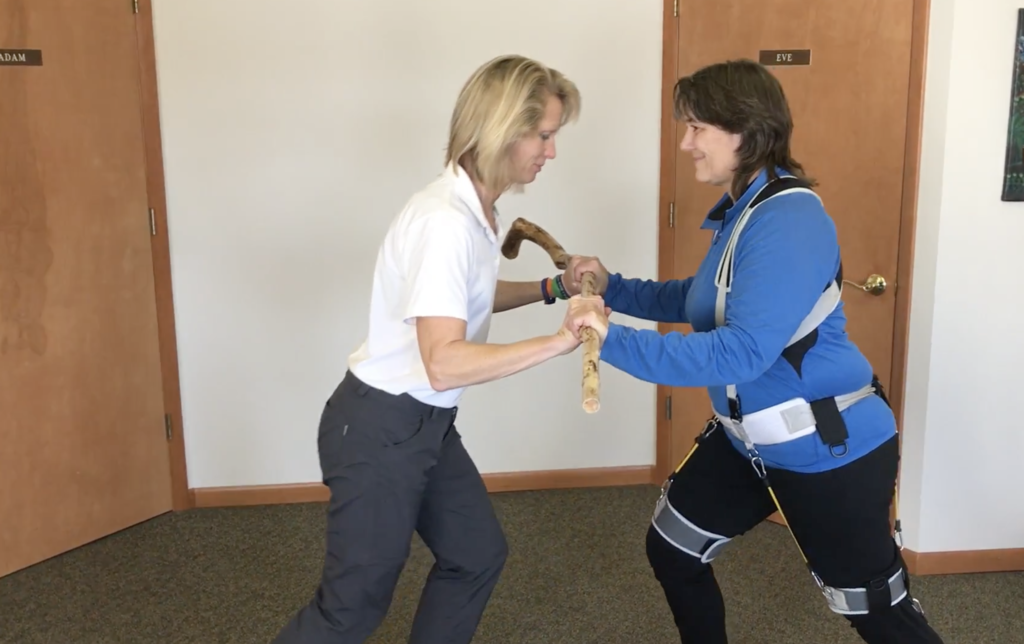We are thrilled that you are joining our growing family of NewGait Trained Clinicians. We created the NewGait Clinician Portal so that you will always have access to the resources that will help you be successful with the NewGait.

In this video Kim Spranger, PT, our lead clinician, will narrate the donning procedure for the standard configuration.
PESI – NEWGAIT Continuing Education Course
With this simple and effective method, you will have the ability to treat your patients in ways you couldn’t before – strategies for all of the common issues that you treat with gait impairment including: TBI, stroke, MS, Parkinson’s and chronic pain. You’ll learn strategies to quickly pinpoint asymmetries, correct gait compensations, and combine proprioception & neuroplasticity for improved outcomes. All while incorporating a new therapeutic tool that effectively works to “remap the brain” – The NewGait.
Imagine the gratification you’ll feel after you have restored mobility and independence!
Register now to forever change your patients’ lives.
Shelly Denes is an expert in fall prevention and neuro-rehab with more than 25 years of experience treating patients with hemiplegia, neuromuscular disorders, TBI, and SCI. She has a special interest in advanced technology and has been involved extensively with neuroprosthetic devices, lower extremity orthotics, and exoskeleton robotics.
Use these NewGait guides as a quick reference on the go.
During treatment sessions, physical therapists bill timed treatment codes, known as CPT codes, to denote services rendered to healthcare payers. The most commonly billed codes used by physical therapists using the NewGait are neuromuscular re-education, therapeutic activities, and gait training. Below is a description of each code, and an example of using the NewGait with that treatment code.
The NewGait has been used on individuals with MS, ataxia, connective tissue disorder, post-surgical joint replacement, spinal cord injury, back/hip/knee/ankle pain, varying gait abnormalities, post-stroke, prosthetics, upper extremity impairments, and Parkinson’s.
Patient comfort will typically be improved with the patient wearing a balanced unit, however one side may benefit from a stronger band.
As bands are applied, listen to your patient for feedback. Ultimately they will tell you what feels most comfortable, most supportive, and aids mobility the best. Therapists are strongly encouraged to put on the device, in varying combinations of band arrangements, to become familiar with the usefulness of the device. To increase knee extension at heel strike, add a dorsiflexion band. To decrease knee extension at mid stance, add a hip flexion assistance band. To increase base of support with ambulation, add hip abduction bands.
Some patients use the NewGait during several sessions of physical therapy and then the device is no longer needed. Some patients obtain a unit for home use and perform their home exercise program (HEP) while wearing the device. Others have made the NewGait an essential aid to ambulation and wear the unit most days during activities of daily living.
This depends on each individual patient’s gait abnormality. You can see the suggested configurations for common gait abnormalities here.
Do you believe the patient could benefit from having the NewGait for home use? Then fill out and provide the patient with a patient purchase form. These are found in your NewGait clinician manual or downloaded from the clinician portal.